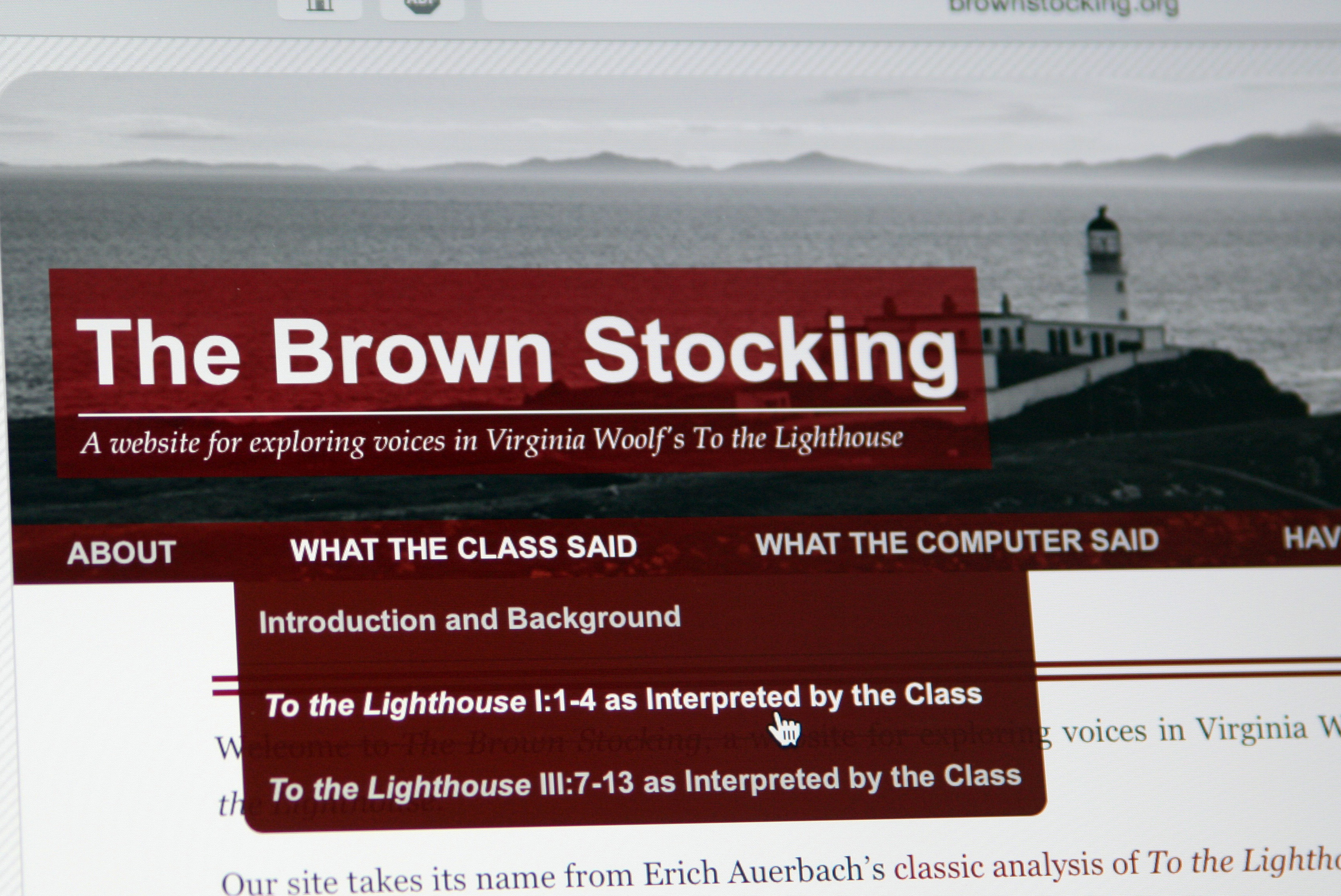The Brown Stocking is a website co-created by myself and Julian Brooke in 2011–2012. It is a sort of sequel to He Do the Police in Different Voices, but rather than focusing on simple “voice switching,” it investigates the murky waters of free indirect discourse, where voices blend and mix. It was built on work carried out collaboratively with the students and Teaching Assistants of the Fall 2012 and Winter 2013 sections of “The Digital Text,” a course I taught at the University of Toronto from 2011–2013.
From the website:
Welcome to The Brown Stocking, a website for exploring voices in Virginia Woolf’s To the Lighthouse.
Our site takes its name from Erich Auerbach’s classic analysis of To the Lighthouse in his great philological work, Mimesis. For Auerbach, the novel’s most distinctive stylistic trait is what he calls “the multipersonal representation of consciousness” — the way the novel tells its story not through the objective voice of an omniscient narrator, but through the numerous subjective, fallible viewpoints of the characters themselves. While this is partly what makes To the Lighthouse such an enduringly fascinating novel, it can also make it difficult to understand. Because Woolf so insistently employs the narrative device free indirect discourse (FID) to hover between the consciousnesses of so many characters, we as readers are often left unsure about who exactly is speaking.
Our website offers a number of answers to this simple but vexing question, “Who is speaking?” It also provides you with several resources — including a game! — for answering this question yourself.
The first section of the site, “What the Class Said,” gathers the interpretations of some 320 undergraduate student readers of To the Lighthouse. As part of their work in the University of Toronto English course “The Digital Text,” these students were asked to annotate a section of the novel and give their reading of “who is speaking.” Their findings are aggregated in this section into a kind of “reader’s map” showing how differently individual readers often interpret the same passage of the novel.
The second section, “What the Computer Said,” details our efforts to develop an algorithmic, computational reading of voices in the novel. Since computational approaches are normally premised on the possibility of correct and incorrect answers, the challenge of our work has been to develop an algorithm that seeks out grey areas — the parts of the text where one can’t be certain who is speaking. Another challenge is basing our algorithm not on a pre-conceived definition of FID, but rather on what actual human readers — students, experts, visitors to this website — identify in practice as FID.
The third section, “Have Your Own Say,” provides an interface for making your own reading of To the Lighthouse. It allows you to create a customized edition of the novel in which your interpretation is made visually explicit, and allows you to download a TEI XML file containing your reading in machine-readable form. It also includes a game — “Who Reads Best: Student, Computer, or Expert?” — that allows you to choose which interpretations you find most persuasive.
The final section, “Ask the Experts,” presents several “expert” interpretations of voices in To the Lighthouse. While these readings come last, they are not intended as the “final word”; rather, they are included to demonstrate the wide variety of possible interpretations that exist even among “experts” — and thus to encourage you further in pursuit of your own interpretations.
Julian and I continue to pursue our research into dialogism and free indirect discourse in modernist fiction.

